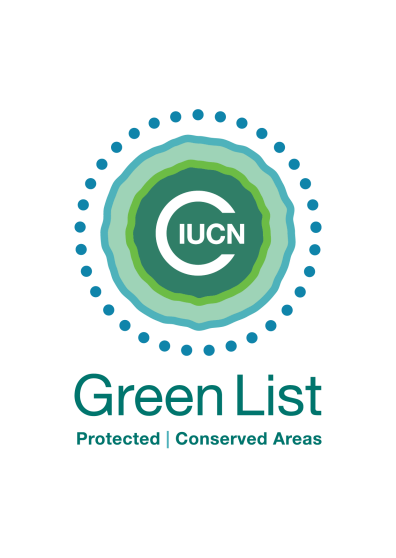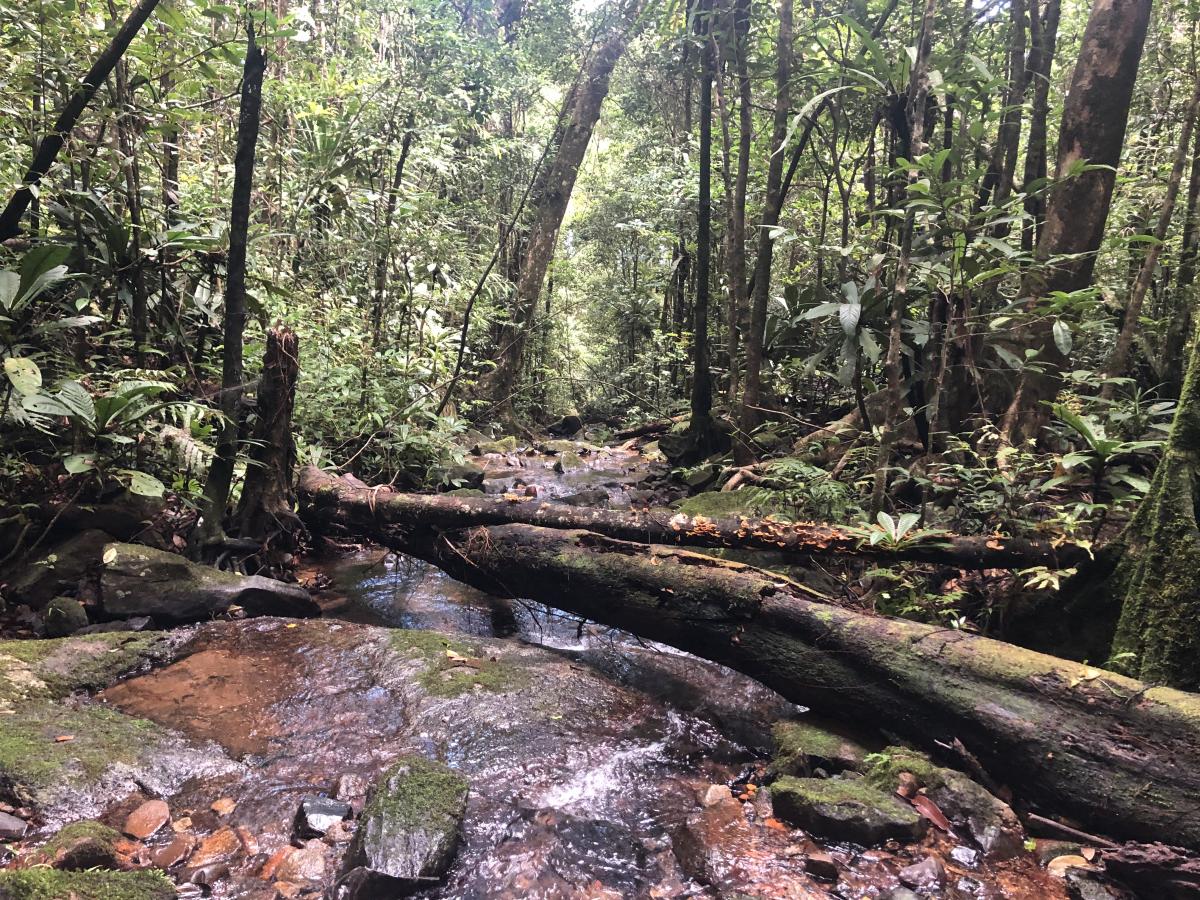The National Natural Park System of Colombia reaches 54 protected areas.
THE SANCTUARY OF FLORA “MEDICINAL PLANTS ORITO INGI ANDE” IS BORNOne of the few protected areas in the world that has been created for the protection of the biodiversity associated to the survival of the traditional knowledge of indigenous peoples.

Photo: Jim Thorsell
Bogotá, Colombia, June 12, 2008
With funds form the Dutch Embassy in Colombia, the Gordon and Betty Moore Foundation, and Amazon Conservation Team, The Colombian Ministry for the Environment, Housing and Territorial Development, and the Head Office of National Natural Parks of Colombia, have declared a new protected area.
“The declaration of The Sanctuary of Flora “Medicinal Plants Orito Ingi Ande is an important step towards the conservation of the intangible heritage of the Colombian people, which will benefit the oncoming generations”, stated the Minister.
The Sanctuary of Flora Medicinal Plants Orito Ingi Ande is regarded as a special care area because it is jointly protected by indigenous communities, traditional authorities and several government biological and cultural conservation institutions.
The Minister of the Environment also expressed that this sanctuary is one of the few cases in the world in which a protected area is created in order to preserve an intangible heritage. The knowledge this indigenous community possesses is transmitted from one generation to the next. By means of their wise interaction with nature they guarantee the preservation of the natural and cultural diversity present in the Sanctuary of Flora Medicinal Plants Orito Ingi-Ande.
The Sanctuary of Flora Medicinal Plants Orito Ingi Ande protects the territory traditionally used by the Kofán indigenous community. In their language, “Ingi Ande” means “Our Territory”.
Orito Ingi Ande is located in Southwestern Colombia, in the Departments of Putumayo (Municipality of Orito), and Nariño (Municipalities of Funes and Pasto), on the eastern slope of Patascoy hill, in the so-called “Andean-Orinoco foothill”. Within its 10.204,26 hectares, it preserves tropical rainforests and Andean forests ranging between 700 and 3.300 meters above sea level.
The Sanctuary is bordered by rivers Orito and Guamués, which are part of the fluvial star of Patascoy hill that flows into the Amazon basin.
“Over a hundred plants from the medicinal gardens of the area have been characterized jointly with Kofán grandmothers and youngsters. Such gardens are regarded by the community as pharmacies where they find the plants required in their medicinal practices”, stated Mrs. Julia Miranda, Director of National Natural Parks of Colombia.
These medicinal plant gardens are material spaces for the preservation of their customs and the legacy of their traditional medicine, where knowledge is transmitted by grandmothers to mothers and by them to their children.
Kofans are born botanists. Traditional medicine men and women identify medicinal plants and their uses, and in agreement with the elements of the site, like animals, other plants, sacred places, ancestors, the invisible and the remedies, give birth to traditional medicine, which, due to their ways and beliefs, is integral taking care of the mind, the spirit and the body.
It is a fauna rich area, with an estimate 400 bird species, of which over 97 have already been reported. It also has amphibians, reptiles and emblematic mammals, such as the spectacled bear and the jaguar, endangered species listed in the Red Book of Mammals of Colombia.
This declaration was possible thanks to the support of the Etno-biology Institute, Rosario University, The Union of Yagé-user Indigenous Medicine-men of Colombian Amazonia –UMIYAC-, and of the indigenous communities and traditional Medicine-men of the Putumayo foothills, who were the first to propose its creation, and provided the necessary knowledge that led to the declaration of this protected area.
Traditional Medicine as a Cultural and Biological Connection
Indigenous communities and traditional medicine-men of the yagé culture had the initiative for the creation of a protected area for the preservation of medicinal flora, as a means of combining the protection of the habitat and the biological resource with that of the traditional medicine systems, thus contributing to the union and recovery of their natural, cultural and intangible heritage.
“The declaration of the Sanctuary Orito Ingi Ande is an important landmark in the history of the National Natural Parks of Colombia. The category of Sanctuary of Flora of Medicinal Plants harmonizes the western point of view of the conservation of biodiversity with the traditional integrated management of the Cosmo vision of the Kofán People. The preservation and survival of their customs and traditions in the use and management of medicinal plants depends on the conservation of these territories”, stated Juan Lozano, Ministry of the Environment.
Yoco, also known as “the sap of the forest”, is one of the most important plants for the indigenous communities that live in the area who consider it as stimulating, laxative and medicinal. It has been used since before the arrival of the Spaniards in Colombian, Ecuadorian and Peruvian western. The preservation of yoco is directly related to the preservation of these communities’ cultures.
Julia Miranda, Director of National Natural Parks of Colombia, believes that “The risk of extinction of yoco and other medicinal plants, and the decreasing possibility of counting on natural areas that allow the indigenous peoples to develop their traditions, bear an impact on the conservation of medicinal biodiversity, and favor cultural erosion of these communities. In most cases, the effectiveness of the medicinal plants depends on their collection from natural environments because it is only there that they are charged with the vital energy of nature.
With this declaration, the Sanctuary of Flora Medicinal Plants Orito Ingi Ande joins the National Natural Park System, adding up to the more than 11 million protected hectares in our country.



